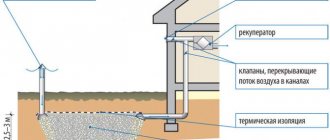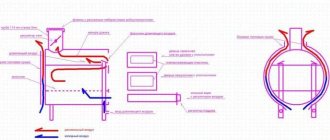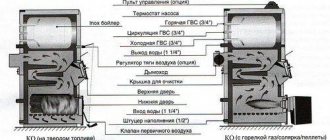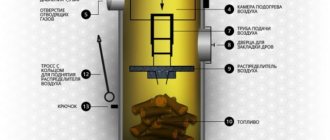The wood-burning internal combustion engine is not a ghost from the distant past. Cars and power plants using wood as an energy source can still be found today. It is worth clarifying: the engine operates on gas obtained from wood by burning it in a certain way. Installations that produce such gas are called gas generators; they have been used in industrial enterprises for quite a long time. But is it possible to make a gas generator with your own hands and is it worth doing? These are the questions that our article aims to answer.
Peculiarities
A wood-fired power plant is not a new invention, but modern technologies have made it possible to somewhat improve previously developed devices. Moreover, several different technologies are used to generate electricity.
In addition, the concept of “wood-burning” is somewhat inaccurate, since any solid fuel (wood, wood chips, pallets, coal, coke), in general, anything that can burn, is suitable for the operation of such a station.
Let us immediately note that firewood, or rather the process of its combustion, acts only as an energy source that ensures the functioning of the device in which electricity is generated.
The main advantages of such power plants are:
- The ability to use a wide variety of solid fuels and their availability;
- Receive electricity anywhere;
- The use of different technologies makes it possible to obtain electricity with a variety of parameters (sufficient only for regular phone recharging and up to powering industrial equipment);
- It can also act as an alternative if power outages are common, as well as the main source of electricity.
Results
The above are just a few ways to make a gas generator with your own hands. But all of them allow you to get a truly reliable and effective device that provides the following advantages:
- - lower fuel costs (boiler efficiency - from 90%);
- - long combustion process. For firewood it is about 20 hours, and for charcoal it is about 7-8 days. Possibility of using any fuel, be it wood, straw or cake.
- In some cases, whole logs can be placed in the firebox (with the appropriate tank sizes);
- — reliability and ease of operation. Cleaning of the blower or chimney should be done rarely, if at all.
Classic version
As noted, a wood-fired power plant uses several technologies to produce electricity. The classic one among them is steam power, or simply the steam engine.
Everything is simple here - wood or any other fuel, when burned, heats up the water, as a result of which it turns into a gaseous state - steam.
The resulting steam is supplied to the turbine of the generating set, and due to rotation, the generator generates electricity.
Since the steam engine and generator set are connected in a single closed circuit, after passing through the turbine the steam is cooled, fed back into the boiler, and the whole process is repeated.
This power plant scheme is one of the simplest, but it has a number of significant disadvantages, one of which is the danger of explosion.
After water passes into a gaseous state, the pressure in the circuit increases significantly, and if it is not regulated, there is a high probability of rupture of the pipelines.
And although modern systems use a whole set of valves that regulate pressure, the operation of a steam engine still requires constant monitoring.
In addition, ordinary water used in this engine can cause scale to form on the walls of the pipes, which reduces the efficiency of the station (scale impairs heat transfer and reduces the throughput of the pipes).
But now this problem is solved by using distilled water, liquids, purified impurities that precipitate, or special gases.
But on the other hand, this power plant can perform another function - to heat the room.
Everything is simple here - after performing its function (rotation of the turbine), the steam must be cooled so that it turns into a liquid state again, which requires a cooling system or, simply, a radiator.
And if you place this radiator indoors, then in the end we will receive not only electricity from such a station, but also heat.
Principle of operation
In order to understand how to properly use a generator at home, it is worth understanding the basics of its operation. This will allow you to understand whether the costs of materials are worth the investment and how quickly they will pay off. In addition, the gas generator has its own scope of application.
In itself, this device is a complex of components and assemblies that ensure the production of gas from solid fuel. The resulting material is used in the operation of the internal combustion engine. But there is a nuance: the design of generators may differ from each other - it all depends on the type of solid fuel.
One of the most common, and perhaps affordable, types of fuel is firewood. When wood is burned in a sealed space, the process produces flammable gases such as carbon monoxide, hydrogen, methane and other unsaturated carbons. This mixture additionally contains ballast gases - oxygen, water vapor, carbon dioxide and nitrogen. But the efficiency of the gas generator does not simply depend on the production of such a combustible mixture. It must become suitable for use for specific purposes. Therefore, the entire process goes through the required stages:
- Gasification. Here the solid fuel must completely burn out and enter the smoldering stage. This process occurs with a small amount of oxygen - 30-35%.
- The first and second stages of cleansing. All volatile substances resulting from smoldering are separated using a dry vortex filter-cyclone and fed into a separate chamber - a scrubber. Here water is already used, which carries out another cleaning of the combustible stream.
- Cooling. During the process of combustion and smoldering, all substances acquire a fairly high temperature - from 700 degrees and above. To reduce their performance, an air or water heat exchanger is used. After this, the mixture will have to undergo another cleaning.
- Dispatch. After all stages, the resulting finished substances can be pumped into a distribution tank using a compressor, or immediately enter the internal combustion engine.
In fact, the full cycle is quite complex, and therefore takes time. But the main component is the gas generator itself. Basically, it is a metal column of cylindrical or rectangular shape, tapering at the end. The internal structure has several air pipes through which oxygen is pumped in and gas comes out. At the top there is a lid through which firewood is loaded.
If you don’t delve too deeply into the basis of chemical processes, the process of gas production looks like this: they loaded fuel - it burned/decayed - a gas mixture was obtained. In order for the final product to have the necessary properties, there are many components inside the structure that clean and cool the mixture. If we talk about home gas generators, then you can use a simpler design. This turns out to be both simpler and cheaper.
Gas generators
The second type is gas generators. Such a device can be used in several directions, including generating electricity.
It is worth noting here that such a generator itself has nothing to do with electricity, since its main task is to produce flammable gas.
The essence of the operation of such a device is that during the oxidation of solid fuel (its combustion), gases are released, including flammable ones - hydrogen, methane, CO, which can be used for a variety of purposes.
For example, such generators were previously used in cars, where conventional internal combustion engines worked perfectly on the emitted gas.
Due to the constant rise in fuel prices, some motorists and motorcyclists have already begun installing these devices on their cars.
That is, to get a power plant, it is enough to have a gas generator, an internal combustion engine and a regular generator.
The first element will release gas, which will become fuel for the engine, which in turn will rotate the generator rotor to produce electricity as output.
The advantages of power plants using gas generators include:
- Reliability of the design of the gas generator itself;
- The resulting gas can be used to operate an internal combustion engine (which will drive an electric generator), a gas boiler, a furnace;
- Depending on the internal combustion engine and electric generator involved, electricity can be obtained even for industrial purposes.
The main disadvantage of the gas generator is the bulkiness of the design, since it must include a boiler where all the processes for producing gas take place, a system for its cooling and purification.
And if this device is used to generate electricity, then the station must also include an internal combustion engine and an electric generator.
Method No. 2
When creating a gas generator for a car, the main emphasis is not only on the reliability and efficiency of the device, but also on its compactness.
Abroad, the cooling filter, cyclone and housing part are made of stainless steel, which allows the use of metal that is half as thick.
Naturally, this design turns out to be much easier. In our conditions, to reduce the cost of construction, old propane cylinders or fire extinguishers are used.
Liquefied propane cylinders are often used to make external containers.
The internal part is made from the receiver of a truck, for example, KAMAZ or ZIL.
Particular attention should be paid to the grate - it is made of thin metal, and the pipes are made of ordinary pipes (the main thing is to choose the right diameter).
The upper part of the cylinder is used to make a cover with fasteners. As a last resort, the part can be made of sheet steel.
The lid is sealed using a special cord treated with graphite impregnation and made of heat-resistant asbestos.
To make a coarse filter, you can use an old fire extinguisher or do it even simpler - take a piece of pipe.
At the bottom there should be a cone-shaped nozzle necessary for unloading ash.
At the top, the end must be tightly closed with a lid (as a rule, it is welded).
An outlet pipe is installed in the cover itself, and on the side there is another fitting for supplying combustion products.
The gases released by the gas generator have a high temperature, so they require high-quality cooling.
There are two reasons for this:
- firstly, gases heated to high temperatures have a minimum density, which makes the process of burning them in internal combustion engine cylinders almost impossible;
- secondly, there is a risk of a spontaneous outbreak if the gas comes into contact with hot engine elements.
During the ignition process, it is important to ensure normal gas movement along the path - this work is performed by the fan.
After the engine starts, the working composition moves due to vacuum, so there is no need for a fan.
Standard heating radiators can be used as a cooler. The main thing is to position them correctly and ensure maximum contact with air masses.
In some cases, installation of bimetallic radiators is allowed.
Gas fuel must be cleaned before being supplied to the engine - this is ensured using special filters.
We must not forget about another important element - the mixer. With its help, the volume of the supplied gas-air mixture is regulated. The adjustment is made using the damper.
Representatives of factory-made power plants
Let us note that the indicated options – a thermoelectric generator and a gas generator – are now a priority, therefore ready-made stations are produced for use, both domestic and industrial.
Below are a few of them:
- “Indigirka” stove;
- Tourist stove “BioLite CampStove”;
- Power plant "BioKIBOR";
- Power station "Eco" with gas generator "Cube".
Stove "Indigirka".
An ordinary household solid fuel stove (made like a Burzhaika stove), equipped with a Peltier thermoelectric generator.
Perfect for summer cottages and small houses, as it is quite compact and can be transported in a car.
The main energy from burning wood is used for heating, but the available generator also allows you to obtain electricity with a voltage of 12 V and a power of 60 W.
BioLite CampStove stove.
It also uses the Peltier principle, but it is even more compact (weighs only 1 kg), which allows you to take it on hiking trips, but the amount of energy generated by the generator is even less, but it will be enough to charge a flashlight or phone.
Power plant "BioKIBOR".
A thermoelectric generator is also used, but this is an industrial version.
The manufacturer, upon request, can produce a device that provides output electricity with a power of 5 kW to 1 MW. But this affects the size of the station, as well as the amount of fuel consumed.
For example, an installation that produces 100 kW consumes 200 kg of wood per hour.
"Eco".
But the Eco power plant is a gas generator. Its design uses a “Cube” gas generator, a gasoline internal combustion engine and a 15 kW electric generator.
In addition to ready-made industrial solutions, you can separately buy the same Peltier thermoelectric generators, but without a stove, and use it with any heat source.
Fuel prices are constantly rising
The high cost of gasoline and diesel, as well as rising gas prices, are forcing us to switch to more economical types of fuel.
The principle of operation here is simple. The engine does not run on gasoline, diesel fuel or regular gas (methane, propane), but on gas released when wood burns.
Devices that allow the production of such gas are called gas generators.
In addition to the domestic sphere, they are very popular and have long been used in industry.
As for manufacturing methods, they differ. In this article we will look at the most popular of them.
Schematic diagram of the operation of the gas generator.
Homemade stations
Also, many craftsmen create homemade stations (usually based on a gas generator), which they then sell.
All this indicates that you can independently make a power plant from available materials and use it for your own purposes.
Next, let's look at how you can make the device yourself.
Based on a thermoelectric generator.
The first option is a power plant based on a Peltier plate. Let us immediately note that a device made at home is only suitable for charging a phone, a flashlight, or for lighting using LED lamps.
For production you will need:
- A metal body that will play the role of a furnace;
- Peltier plate (purchased separately);
- Voltage regulator with installed USB output;
- A heat exchanger or just a fan to provide cooling (you can take a computer cooler).
Making a power plant is very simple:
- We make a stove. We take a metal box (for example, a computer case) and unfold it so that the oven does not have a bottom. We make holes in the walls below for air supply. At the top you can install a grate on which you can place a kettle, etc.
- We mount the plate on the back wall;
- We mount the cooler on top of the plate;
- We connect a voltage regulator to the terminals from the plate, from which we power the cooler, and also draw terminals for connecting consumers.
It works simply: we light the wood, and as the plate heats up, electricity will begin to be generated at its terminals, which will be supplied to the voltage regulator. The cooler will start working from it, providing cooling of the plate.
Advantages
It should be noted that the operation of these units is fully automated and does not require constant user participation. In particular, regular refueling of fuel is not necessary; it comes from the main line (cylinder) as needed. In addition, gas generators use the cheapest fuel - natural or liquefied gas (LPG). At the same time, they use it very economically, even in long-term battery mode. If we talk about the cost of these units, then it is not much higher than the prices of similar devices that consume gasoline or diesel.
Considering the fact that the engine of a gas generator will last many times longer, since gas does not cause corrosion of metal elements. Also, parts in the cylinder-piston group are subject to less wear, and the oil needs to be changed much less frequently, due to the reduced exposure to gas. What gas you use can be determined by knowing what gas supply source your gas stove is connected to. If the gas stove is connected to a gas cylinder, then you are using liquefied propane-butane gas.
If the gas stove is connected to the in-house gas pipeline (which in turn is connected to the street gas pipeline), then you are using natural gas, which is called methane. Gas power plants are considered comfortable and easy-to-use equipment, since they are equipped with special casings to protect them from moisture, precipitation and corrosion. They are also equipped with a specific protective base, which allows the units to be installed on any surface.
Gas generators are in no way inferior to diesel and gasoline ones, but, on the contrary, have a number of advantages, such as:
- Greater fuel economy. The use of LPG significantly reduces costs. Savings of up to 40% compared to gasoline. From calculations we found that due to savings on fuel, gas equipment pays for itself within a year. Gas consumption is indicated in the description.
- Fuel efficiency. LPG engines have greater performance and require less maintenance compared to traditional gasoline engines.
- Increasing the service life. Using LPG places less stress on the engine, which prevents excessive wear and mechanical problems.
- Low emissions into the atmosphere. LPG produces fewer exhaust emissions than gasoline, including CO², NO and SO, making it virtually environmentally friendly and a better choice for you.
- Reduced noise level. You will not only breathe clean air, but also experience less discomfort due to the low noise level.
Pros and cons of a wood-fired power plant
A wood-fired power plant is:
- Fuel availability;
- Possibility to get electricity anywhere;
- The parameters of the generated electricity are very different;
- You can make the device yourself.
- Among the shortcomings it is noted:
- Not always high efficiency;
- Cumbersome design;
- In some cases, generating electricity is just a side effect;
- To generate electricity for industrial use, large amounts of fuel must be burned.
In general, the production and use of solid fuel power plants is an option worthy of attention, and it can not only become an alternative to power grids, but also help in places remote from civilization.
Method No. 3
To implement the following method, you need to prepare a 4.25-inch (14 centimeters in length) stainless steel tube and a five-gallon tank. You can use an old fire extinguisher instead of a pipe.
Next, the algorithm of actions is as follows:
- a special hole is cut in the drum for installing the prepared pipe;
- the flange is cut out. To do this, use a small piece of 1/8 inch steel. It is necessary to secure the flame tube in the drum;
- Using aluminum angles and bolts, the flame tube is secured to the flange.
As a gasket, you can use a silicone gasket, with which you can effectively seal all existing cracks and seams;
a door is cut into the tank of such a size that your hands can get into it to remove old ashes. Then a small door is made (from another tank). The door can be fixed using special fasteners;
- You can use the grill part from a steamer as a grate for the bottom of the tube. The main requirement is that it be made of stainless steel;
- the grate broiler is suspended slightly below the bottom of the flame tube by means of chains;
- all elements are installed on the base, namely the grille, flange, flame pipe. To seal the joints, as mentioned above, high-temperature grease should be used;
- A fan is used to circulate gas.
Other diagrams that can help you in making a gas generator.
Another sample.
Pyrolysis plants from small manufacturers
If you are unable to make a pyrolysis unit yourself, and imported models are too expensive, then you can purchase a small-scale production unit. In the latter case, you must follow a number of rules:
- Require a license to manufacture this equipment. A license is not a complete guarantee of purchasing reliable and effective products, but the risk of purchasing low-quality equipment is significantly reduced.
- Assess the appearance of the unit and the quality of welds. If possible, you should look under the decorative trim.
- If ceramics were used in production, then it is necessary to clarify the price of replacing the nozzle, which can be up to a third of the cost of the pyrolysis unit.
- Determine which heating system this equipment is intended for - open or closed.
For example, Bastion gas generator boilers, according to reviews from owners, work quite normally in brick housing construction, even in regions with cold winters. Although the duration of combustion on one bookmark in winter is approximately 5-6 hours.
It is necessary to purchase with some power reserve. This is explained by the fact that consumers are not always able to obtain perfectly dry fuel.
Gas-generating or pyrolysis (according to the principle of operation) boilers are in demand due to their high fuel economy combined with attractive efficiency.
Do-it-yourself gas from wood
Producing gas from wood was widely used during the Second World War. Liquid fuel went to the front line, many destroyed oil refineries prompted the invention of gas obtained from firewood.
At that time, firewood was more affordable than petroleum products. Therefore, Soviet and foreign equipment was equipped with gas generators. Tanks, cars and motor vehicles used wood gas.
In the 21st century, after the rise in price of liquid fuel, people remembered technology and began to produce gas from firewood with their own hands.
The technology for producing gas is simple. Firewood is loaded into the gas generator and set on fire. After the firewood is ignited, the supply of oxygen decreases, the firewood begins to smolder, carbon monoxide is released, which rises hot, enters the cooling coil, is filtered through filters, and the cooled and purified gas enters the gas combustion chamber. Burnt gas heats a room faster than solid fuel.
Blagodarova gas generator boiler
During the operation of the Blagodarov boiler, all substances produced as a result of combustion are burned.
The design of such equipment consists of 3 parts. These are combustion and gasification chambers and a bunker for burning fuel combustion elements. The fuel material burns in the 1st of 2 chambers, and in the 3rd it becomes a gas.
The undoubted advantage of this heating equipment is long-term fuel combustion (the device is superior to other heating boilers in this indicator) and good heat transfer. Regardless of electricity, it always produces the power that is required.
During the combustion of firewood and wood processing waste, the grate covering the bottom of the fuel chamber contributes to the formation of a high level of heat under natural draft conditions. With a Blagodarov boiler, you can expand the volume of the fuel bunker without affecting the efficiency of the device. The rails installed in the combustion chamber are a good heat accumulator.
Coal, sawdust, and peat can be used as fuel. In winter, the fuel chamber can be regularly replenished so that the optimal temperature regime is maintained in the heated room.
Model overview
You can buy a wood-burning electric generator from specialized companies. It is convenient to contact them and get comprehensive information on the websites of these companies:
We bring to your attention several models of such generator stoves designed for domestic needs.
Portable models
They are represented by wood chippers and grills equipped with an electrical converting element. This stove is good for heating food on a hike; you can use it to warm a mug of tea, fry a small piece of meat, and charge your gadgets at the same time. They are not designed for more.
For example, the BioLite CampStove stove can operate on any wood fuel: twigs, chips, cones. It produces up to 5 W of power and is equipped with USB. To boil a liter of water, just a little wood is enough, and it will take literally 5 minutes. The price of BioLite CampStove is 9,600 rubles.
Indigirka
The Indigirka stove is the most famous model of wood-burning electric generators. This stove heats a room up to 50 m3, weighs 37 kilograms, is made of heat-resistant steel and lasts for decades. Firebox volume – 30 liters. Indigirka's output voltage is 12 volts, maximum output power is 50 W. Of course, the main purpose of the stove is heating; a convenient cast-iron burner allows you to cook food or warm tea. As an electric generator, the stove is able to work within 15 minutes after ignition.
Precautionary measures
An ordinary furnace cannot be converted into a gas generator. Such manipulations will only lead to smoke in the building. In order to fully use a gas generator device, it is necessary to take into account its disadvantages.
Cold gas is formed at the outlet of such equipment. If the chimney is not properly insulated, condensation occurs. The moisture will flow back into the device. Therefore, experts recommend the use of insulated sandwich structures. They consist of 2 pipes nested inside each other, between which the insulation is located.
In order for the gas generator to operate as efficiently as possible, it is necessary to install an economizer (additional equipment).











